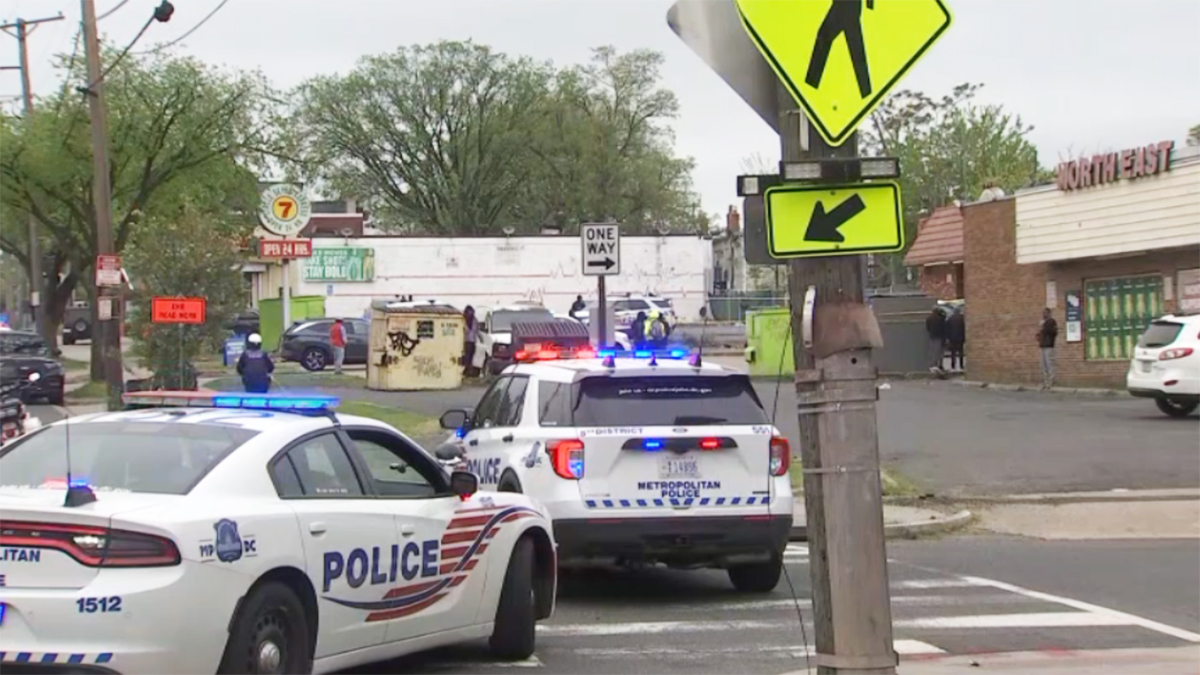Court records show potential missteps as investigators collected evidence from the burning mansion where a wealthy family and their housekeeper were murdered in May 2015.
Daron Wint is charged with murder in the deaths of Savvas Savopoulos, 46; his wife, Amy, 47; their 10-year-old son, Philip, and housekeeper Veralicia Figueroa, 57. Wint is accused of holding the victims captive, extorting $40,000 and setting their Northwest Washington mansion on fire.
Though police said from the start more than one person may have been involved, Wint is the only person charged.
Court documents filed by prosecutors in July raise questions about the way evidence was collected from the crime scene and what may have been missed.
Investigators found a screwdriver holding a window open in the basement of the Savopoulos mansion, according to the court documents. Forensic biologist Emily Head of the ATF "recalls asking that the screwdriver be collected, however, she does not believe it was recovered," the documents say.
Bottles and plastic gloves also were found at the crime scene, but the evidence was never collected because the investigator was told they had been used and left behind by the first-responders and therefore were not relevant to the crime, court documents say.
The documents describe a similar scene in the master bedroom, where bottles were found in the room where the three adults were tied up and tortured. The documents indicate firefighters took water from the victim’s refrigerator in the master bedroom and tossed it at the scene, so that evidence was not recovered either.
“And they go in there and they take water out of the refrigerator and they drink out of it,” longtime criminal defense attorney Bernard Grimm said. “How do you know that Wint and his other compatriots didn’t go in there and touch those water bottles or touch the refrigerator door?”
According to the ATF investigator, "The medical examiner indicated that a tie may have been used to bind at least one of the victims," the documents say. So the ATF investigator "asked that the tie door/drawer be swabbed, however, she does not believe that it was."
And only one toilet in the bathroom where the bodies were located was ever swabbed for evidence.
Local
Washington, D.C., Maryland and Virginia local news, events and information
"It appeared that the other toilets were filled with urine," the documents said, but the ATF agent was told they also were used by firefighters during the course of the fire fight.
“When you gotta go, you know, you may not be in an area where there’s port-a-potty or anything else,” retired D.C. homicide detective Susan Blue-Stanton said. “You’ve gotta relieve yourself, so you don’t flush the toilet because you don’t know what else is there.”
She said the firefighters’ actions are not unheard of, and while the failure to test potential evidence isn’t ideal, she doesn’t think it will hurt the case against Wint.
Then last week, as investigators were pouring over their autopsy reports and preparing for trial, they realized $105 was found in the pocket of the pants taken from Savvas Savopoulous at the autopsy and hadn't been searched or swabbed before then.
The case against Wint is centered on DNA from a piece of pizza crust linked to the defendant. The court documents say when the FTA agent recovered the pizza crust, it was in a bag with other pieces of uneaten pizza.
“All the pizza is put into one paper bag, so you have what’s called cross-contamination, which is the pizza is touching each other in the box, the DNA from one piece could be getting on another piece,” Grimm said.
“It may be that no actual evidence was lost, but it may be that the defense will be able to persuade the jury that it is yet another indication of less than ideal police work, and that may give one or more jurors some doubt in the case,” former federal prosecutor Glenn Kirschner said.
Retired FBI agent Clint Van Zandt said the biggest impact might be what could have been learned about other possible suspects but wasn’t.
“There’s reasonable doubt that maybe from an evidence-gathering standpoint we could have put somebody else at the crime scene,” he said.
He said perhaps the most critical piece of evidence that was lost could explain how entry was gained to the home: the screwdriver that propped open the basement window.
Grimm said when a crime scene isn’t preserved, it can have big impact on a trial.
“When you go into a crime scene, a crime scene means no one can touch anything under any circumstances,” he said.
Grimm believes the court documents create reasonable doubt.
“In the end, you could have a jury come back with a not guilty verdict because the evidence technicians screwed up in this case,” he said. “I mean, it’s beyond comprehension.”
The fire department said it was not aware of the allegations until News4 contacted them, and it is now part of an internal review. News4 also reached out to the ATF and the U.S. attorney's office, who are not willing to comment due to the pending litigation.
The defense said, in part, it is anxious for the jury to see how prosecutors accused the wrong person.
Wint pleaded not guilty to 20 felony charges in the brutal crime. The murder charges include four counts each of felony murder in the course of a kidnapping, felony murder in the course of a burglary and felony premeditated murder.
Wint faces life in prison without possibility for release on each murder charge. The minimum sentence is 30 years on each murder charge.
The trial is scheduled to start next week and could last up to two months.



